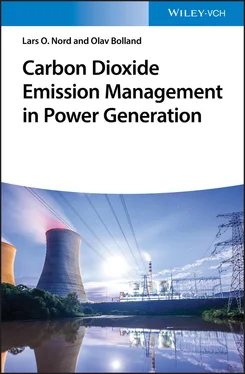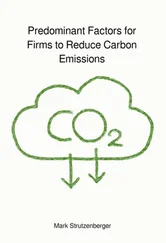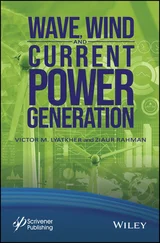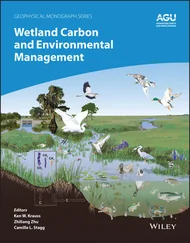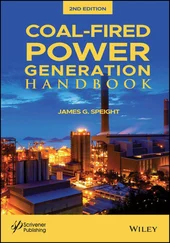On 21 August 1986, Lake Nyos suddenly emitted a large cloud of CO 2estimated as over 1 Mt, which travelled more than 10 km and suffocated 1700 people and 3500 livestock in the area near the lake. The lower levels of the deep lake had become saturated by CO 2coming from a magma chamber beneath the region. The magma chamber is an abundant source of CO 2, which seeps up through the lake bed, charging the waters of Lake Nyos with an estimated 90 Mt of CO 2. It is thought that high rainfall just before the incident, and possibly a landslide, had displaced the CO 2-rich water at the bottom, releasing a massive bubble of CO 2gas from the lake, in a natural phenomenon now referred to as ‘lake overturn’. The heavy gas then sank to the ground and rolled in a cloud several tens of metres deep across the surrounding countryside.
Pipes have now been put in place in Lake Nyos and Lake Monoun to siphon water from the lower layers up to the surface and allow the CO 2at the bottom of the lake to slowly bubble out. Events such as those in Lake Monoun and Lake Nyos can take place only in lakes that do not overturn annually, and where the water becomes stratified with very high concentrations of CO 2at large depths. This can happen in deep tropical lakes.
In the Mammoth Mountain area in California, USA, CO 2is leaking out of the ground at more than 1200 t/d (Farrar et al. 1995; Sorey et al. 1998). The concentration of CO 2near the ground has been measured at over 50%. Three people are known to have died because of CO 2, and there is an area where the trees are dead.
There exist a few volcanoes with crater lakes. These lakes can be rather deep and still, with stratification and deep layers containing large amounts of CO 2, similar to Lake Nyos.
Geysers emit CO 2to the atmosphere. Water charged with CO 2rising from deep in the ground is released periodically in an explosive manner. Hot springs are similar to geysers but release CO 2-rich water at a continuous rate.
In 1979, at the Dieng volcano complex in Indonesia, a release estimated at about 200 kt of CO 2took place in a rather short time before a major eruption. The CO 2flowed from the volcano and down to a plain where 142 people were killed by suffocation.
There are a number of examples of CO 2emissions from sedimentary basins. These emissions are characterised by being smaller and more stable over time compared to those previously given examples from volcanic areas. One example is the Southeast Basin in France where there are several small CO 2fields in the ground leaking to the surface. The CO 2is dissolved in the groundwater and comes out of the ground in springs as carbonated water. This has become the basis for a mineral water industry, such as Vichy and Perrier.
At some places, CO 2is leaking from the seabed. Just outside the Aeolian Islands in the south of Italy, about 25 kt CO 2/yr is leaking over an area covering several square kilometres. Most of the CO 2is being dissolved in the seawater.
A distinction should be made between natural emissions of CO 2in volcanic areas and emissions in sedimentary areas. In volcanic areas, the emission of CO 2is often characterised by a sudden release of CO 2, often caused by unstable seismic activities. High temperature and steam are often present, which builds up high pressure and severe emission with a very high concentration of CO 2. Emissions from sedimentary basins are characterised as more diffuse and definitely not sudden. Most sedimentary basins are located in tectonically stable regions with less or no seismic activity. They typically contain porous rocks or sandstone, which is gas permeable. In some areas, there are also impermeable rock layers that act as seals so that gas cannot go through and reach the surface. Oil and natural gas reservoirs in sedimentary basins have proved that such structures can hold gases locked in the ground for millions of years.
There are also natural accumulations of CO 2in the ground (IPCC-CCS 2005). One example of such a sedimentary basin is the McElmo Dome in Colorado, USA. It contains about 1.6 Gt of CO 2(98% purity) and is sealed by a 700 m-thick impermeable layer. Similar amounts of CO 2are trapped in other fields in the United States: the St Johns Field in Arizona, the Bravo Dome in New Mexico, the Sheep Mountain in Colorado, the Jackson Dome, and the Pisgah Anticline in Mississippi. All fields mentioned above produce commercially traded CO 2, most of which is used to enhance oil production (refer to Section 2.1.2). The largest CO 2accumulation known is the Natuna D Alpha field in Indonesia containing more than 9 Gt CO 2. In the Natuna field, there is also a substantial amount of natural gas, more than 700 Mt. Similar to the Natuna field, although smaller, is the La Barge field in Wyoming, USA. In general, there are many natural gas fields that contain a substantial amount of CO 2and in some cases also some H 2S.
From some of these fields, there is a measurable leakage, whereas others appear to have no leakage. The mechanisms for these leakages are very well understood, so that one can tell with high probability which structures can hold CO 2trapped for a long period of time.
1.4 Man-made Emissions of CO 2
Human activities result in emissions of mainly four greenhouse gases: carbon dioxide (CO 2), methane (CH 4), nitrous oxide (N 2O), and the halocarbons (a group of gases containing fluorine, chlorine, and bromine). These gases accumulate in the atmosphere, causing concentrations to increase with time. Significant increases in all of these gases have occurred in the industrial era.
The emission of CO 2and other greenhouse gases does not only depend on technology but also depend on other mechanisms in society. The emission of CO 2is closely linked to energy conversion, and one can depict the relation between the emission, the energy consumption, Gross Domestic Product (GDP), and population, as in Eq. (1.2), which is a slightly modified version of that presented originally by Kaya et al. (1989). This equation is a simplified way of expressing the relation between these parameters, but it provides a good qualitative illustration of how CO 2emissions are related to these parameters. One obvious flaw in this equation is that the highest increase in population comes in areas where the GDP and energy consumption per capita is below the world average, and consequently, the equation overestimates contribution from the population factor.
(1.2) 
1 This ratio expresses the CO2 formation related to energy consumption in society. The value of this ratio is closely related to the technology being used in terms of efficiency. The type of fuel (coal, oil, natural gas, and biomass) is also important for this ratio, which is further discussed in Section 4.2. The switch from coal to natural gas reduces the value, as do efficiency improvements. In some areas of the world, the dependence on coal is stronger than in others, where natural gas may be more accessible. The potential for reducing this ratio mainly depends on fuel availability and fuel selection and to some extent on how far efficiency is pushed when new power plants are built. There is still a huge potential for improving efficiency in power plants and other processing industries.
2 This ratio is the energy intensity, which is calculated as units of energy per unit of GDP. The ratio says something about the structure of industry, transportation systems, and agriculture. An agricultural country would typically have low energy intensity, whereas, on the other hand, a country with a lot of metal production will typically have high energy intensity. In general, one can say that a high refinement ratio in the industry increases the energy intensity. One should here be aware that the international trade in products and raw materials that require a lot of energy (e.g. aluminium) is large. It may be that a country that is consuming a lot of energy-demanding products is importing most of them. In such a case, the energy intensity does not express the real energy intensity caused by the activities in that country. One example is cars, which are produced only in a few countries. Another example is production of heavy oil or bitumen, like in Venezuela and Canada, where much energy is spent on producing oil that is mainly exported.
Читать дальше
